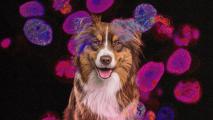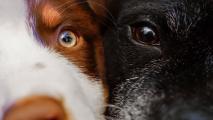Bee tracking is a difficult proposition. Current methods are onerously difficult, expensive, and only work on the heftiest and strongest of bees. Little bees just can’t haul much, besides nectar and their own weight.
To track bees with more ease — and less cash — researchers at the University of Sheffield and the Bumblebee Conservation Trust turned to some sartorial science: they made high visibility, reflective bee tracking “vests.”
“Finding the bee itself is difficult, and finding wild bee nests in the first place is massively difficult and time-consuming, especially for rarer or less-known species,” Michael Smith, a computer scientist at the University of Sheffield and the study’s lead author, said in a release.
“This tool hopefully will make finding them far easier, making these studies a practical approach.”
Bee tracking is crucial to understanding their ecological behavior, including insights into their foraging behavior, how they navigate their environment, and where they prefer to nest.
Bees are, of course, crucial pollinators as they flit from flower to flower, a cornerstone of agricultural systems, and a direct producer of honey, too.
Only larger bees can bear the current radio tags, leaving the lives of smaller bee species something of a mystery. Using the same material as in a reflective cycling vest, the researchers created retroreflective tags. These bounce light back to the source, creating little points of light.
A tracking system — built from off the shelf components — can then use those points of light to track the bee’s actions in real-time. Using an electrically timed shutter, the tracking system uses a flash to bounce off the bee tracking tags; the shutter’s speed allows for a short exposure, ensuring the flash — not the sun — illuminates the scene.
That information is then fed into a machine learning algorithm, trained to recognize these dots of light from false positives, creating a real-time picture of just what the bees are up to.
In tests, the high visibility bee tracking system was able to successfully keep tabs on seven different species, including smaller honeybees and leafcutters — over 100 individual bees in total. The tracking system could track the bees across two field sites from up to 40 meters away.
The tags stayed in place after a week, and, since no marked behavior differences arose from bees with tags as opposed to those without, the tags may be non-intrusive enough for an entire lifespan of bee tracking.
To get the vests on, the bees were snagged with an insect net before being put in a special pot used by beekeepers to mark queens. Made sluggish with cold air, they applied the tags noninvasively.
The bee tracking system can still be refined; the system is limited to that 40-meter range, and only then what’s in its line of sight. Also, all of the flashes look the same to the algorithm, making human follow-up necessary to distinguish which type of bee is being spotted.
The team intends to train the algorithm on multi-color tags to help distinguish species and populations. And since the whole thing is still more cost-effective than radio tags, they hope they can scale it up to automated monitoring.
“Being able to track bees from easy-to-find foraging sites back to the hard-to-find nest gives us the chance to find more nests, and nests much earlier in the life cycle,” Richard Comfort, the Bumblebee Conservation Trust’s science manager, said in the release.
“That means that it’s much easier to establish nest site requirements, which can be taken into account when doing conservation work”.






